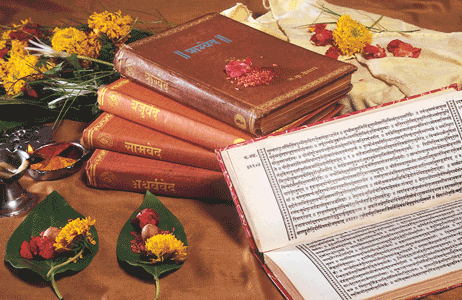Darshan Shastra, interpreting actually to "science of vision" in Sanskrit, is more than fair a collection of philosophical thoughts. It could be an embroidered artwork woven over centuries, speaking to the mental and otherworldly interest of understanding the universe inside and around us. Comprised of six unmistakable however interconnected schools of thought, Darshan Shastra lays uncovered differing points of view on the basic questions of presence, information, and liberation.
Investigating the Six Schools:
Samkhya: Established by the sage Kapila, Samkhya presents a dualistic see of reality, proposing the presence of two unceasing and autonomous standards: Purusha (unadulterated awareness) and Prakriti (primordial matter). The universe shows from the interaction of these two substances, and freedom includes accomplishing a state of total mindfulness and separation from Prakriti's influence.
Yoga: Whereas closely related to Samkhya, Yoga dives more profound into the viable perspectives of accomplishing freedom. Created by Patanjali, the Yoga Sutras diagram an efficient way towards freedom through physical and mental disciplines (asanas and pranayama) and eventually reflection. Yoga emphasizes controlling the intellect and accomplishing a state of unity with the extreme reality.
Nyaya: Established by Gautama, Nyaya stands out for its accentuation on rationale and epistemology. It fastidiously develops a system for thinking and wrangling about (Tarka) pointed at setting up substantial information. Through this precise approach, Nyaya prepares us with the apparatuses to perceive truth from misrepresentation and explore the complexities of information acquisition.
Vaisheshika: Established by Kanada, Vaisheshika complements Nyaya by centering on transcendentalism and the categorization of reality. It proposes six essential categories (padarthas) enveloping all that exists, counting iotas (dharmas) as the building pieces of the universe. By understanding these categories, Vaisheshika looks for to supply a comprehensive system for understanding the nature of reality.
Vedanta: Considered the foremost powerful school, Vedanta draws intensely from the Upanishads, the concluding segments of the Vedas. Central to Vedanta is the concept of Brahman, the extreme reality, and the unity of all presence. Vedanta proposes different pathways towards freedom, counting Jnana (information) through self-inquiry, Bhakti (dedication) through yield to a divine being, and Karma (activity) through caring service.
Past the Philosophical Realm:
The effect of Darshan Shastra amplifies distant past philosophical talk. These schools have altogether influenced:
Devout Conventions: They give the philosophical spine for different Hindu categories and have moreover impacted other Indian religions, such as Buddhism and Jainism. The central precepts of these religions, including karma, dharma, and moksha, discover their roots within the assorted points of view advertised by Darshan Shastra.
Social and Moral Systems: The concepts of dharma (noble living), karma (cause and impact), and moksha (freedom) profoundly saturate the social texture of Indian society. These methods of insight have formed societal values, moral conduct, and the interest of an important life.
Logical Investigation: Whereas recognizing the confinements of immaculate rationale, Nyaya's accentuation on perception and thinking has been credited with clearing the way for early logical request in India. The interest of information through orderly examination and perception, foundational standards in Nyaya, resounds with the logical method.
More profound Bits of knowledge: A Call to Exploration
Darshan Shastra isn't a collection of inflexible tenets but maybe a dynamic embroidered artwork of thought, welcoming us to dig into and contemplate principal questions around presence, information, and the meaning of life. Each school, with its one-of-a-kind viewpoint, offers a valuable lens through which we will look at the world and ourselves.
By setting out on this travel of investigation through Darshan Shastra, we pick up a more profound appreciation for the mental lavishness of India and its persevering impact on devout conventions, social structures, and indeed logical approaches. It engages us to lock in in basic considering, refine our understanding of the world, and eventually, set out on an individual journey for meaning and liberation.
Encourage Exploration:
This article offers a brief outline of the six schools of Darshan Shastra. To dive more profound, locks in with the foundational writings of each school, such as the Samkhya Karika for Samkhya or the Yoga Sutras for Yoga, is exceedingly prescribed. Furthermore, various academic works and modern elucidations of these methods of insight are accessible, giving more profound bits of knowledge and enriching perspectives. Keep in mind, the travel of understanding Darshan Shastra isn't a goal but a ceaseless investigation.


